
About Andrew Cusack
 Writer, web designer, etc.; born in New York; educated in Argentina, Scotland, and South Africa; now based in London.
Writer, web designer, etc.; born in New York; educated in Argentina, Scotland, and South Africa; now based in London. read more
News
Blogs
Reviews & Periodicals
Arts & Design
World
France
Mitteleuropa
Knickerbockers
Argentina
The Levant
Africa
Cape of Good Hope
Netherlands
Scandinavia
Québec
India
Muscovy
Germany
Academica
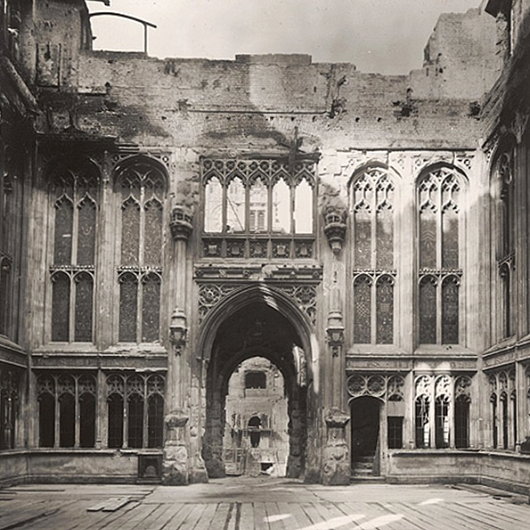
The Commons in the Lords
IT WAS THE NIGHT of 10 May 1941. For nine solid months the Luftwaffe had thrown everything it had at the people of London, as Hitler hoped to bomb the English into despair and surrender. By early May, the Nazis realised the campaign had failed, and resources had to be directed elsewhere. The Blitz had to end, but on its final night, it hit one of its most precious targets. Twelve German bombs hit the Palace of Westminster that night, with an incendiary striking a direct hit at the House of Commons. The locus of Britain’s parliamentary democracy was consumed by flame and completely destroyed.
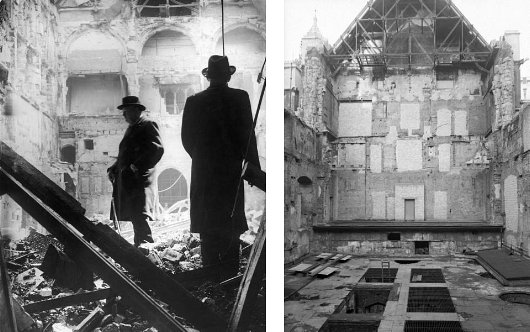
Parliament — both Lords and Commons — continued to function throughout the conflict, with all the parties forming a government of national unity in a war cabinet for the duration. With the Commons chamber gone, the Lords immediately offered their own chamber to to the Commons as a temporary measure.
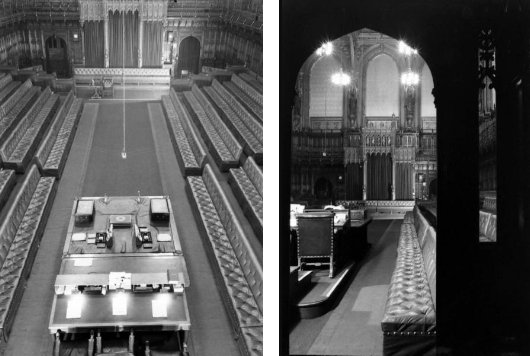
The cross-benches were removed, the gilded reredos behind the throne partly encurtained, and the clerks’ table, dispatch boxes, and Speaker’s Chair were set up at the opposite end of the Lords chamber from the throne.
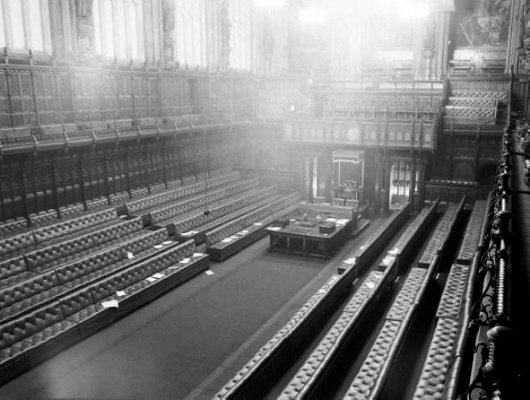
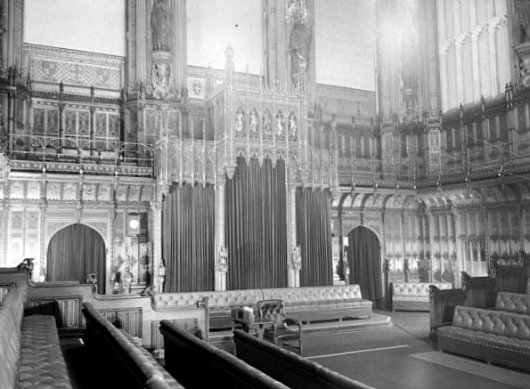
But if the Lords were kind enough to offer their home to the Commons, where would they meet themselves? The Robing Room (below), which already had a throne, was quickly converted into an impromptu upper house. This was much smaller than the usual chamber, but one expects many noble lords were busier helping the war effort, both around the kingdom and indeed across the globe.
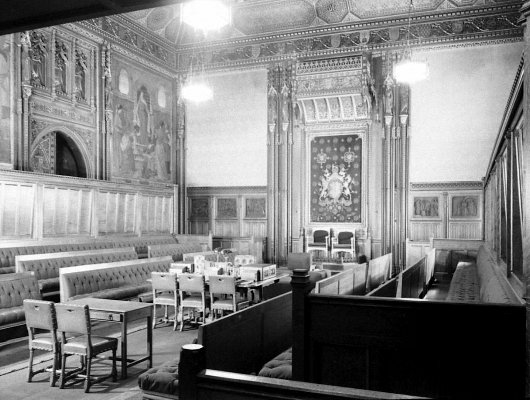
A decision had to be made about whether to restore the completely destroyed House of Commons or to build in a new, more contemporary style.
On the night of May 10, 1941, with one of the last bombs of the last serious raid, our House of Commons was destroyed by the violence of the enemy, and we have now to consider whether we should build it up again, and how, and when.
We shape our buildings, and afterwards our buildings shape us. Having dwelt and served for more than forty years in the late Chamber, and having derived very great pleasure and advantage therefrom, I, naturally, should like to see it restored in all essentials to its old form, convenience and dignity.
In 1950, with the restoration complete, the Commons and Lords returned to the original locations they had occupied since the Palace of Westminster was rebuilt after the fire of 1834.
Search
Instagram: @andcusack
Click here for my Instagram photos.Most Recent Posts
- Burns Tower April 19, 2024
- Patrick in Parliament March 18, 2024
- Articles of Note: 13 March 2024 March 13, 2024
- Cambridge March 9, 2024
- Taken on Trust March 4, 2024
Most Recent Comments
Book Wishlist
Monthly Archives
Categories



I recall the noble Lord Carrington saying that the membership of the upper house was so small in the 40s that they didn’t need a lot of room. I think he said daily attendance was in the forties – or perhaps even the thirties!
Just this weekend, I recalled Churchill’s observation that “We shape our buildings, and afterwards our buildings shape us,” but I had never known the context. Many thanks!
I cannot even begin to fathom what kind of monstrosity Atlee and his partners would have cooked up for the Commons. Rebuilding the chamber as it was before was an infinitely better choice; now most people do not even know it was bombed at all.
The House of Lords, and most of the rest of the interior of the Palace was designed, in its modern incarnation, after the 1838 fire, by the great architect August Welby Northmore Pugin. If I am not mistaken the Commons as it exists post-Blitz is not a recreation of the Pugin space, accounting for its less majestic appearance.
Yes, I should have mentioned the restoration was not a complete one.
The proportions of the chamber, its antiphonal arrangement, and other major aspects were all restored, but the specifics of Pugin’s detailing were not. If you spend a minute or two in the Commons and then in the Lords, you notice the much finer details and the (relative) simplicity of the Commons chamber.
Such interesting photos. the one at the top is hauntingly beautiful, but it also reminds me of photos taken in St Agnes Church after the big fire. Unfortunately, the powers that be at St Agnes didn’t have the same thoughts as those in London in the 1940s. All I can say is thank goodness Tony Blair and his ilk weren’t in charge back then, or they would have probably chose to rebuild something completely modernist to represent the new “cool Britania”
Oh wow, I never knew the Commons used the Lords chamber during WWII, it actually proves the latter chamber could very easily and quickly be refitted for a smaller Commons (of around 450 at most) dealing with exclusively national matters, whilst a devolved English Parliament could use the current Comons chamber.
Lovely phots, great article, many thanks and keep up the great work.
P.S. Apologies on above typos, it’s hard to proof-read a post on this site, the Comment section is a little skewed. Other than that, great website…